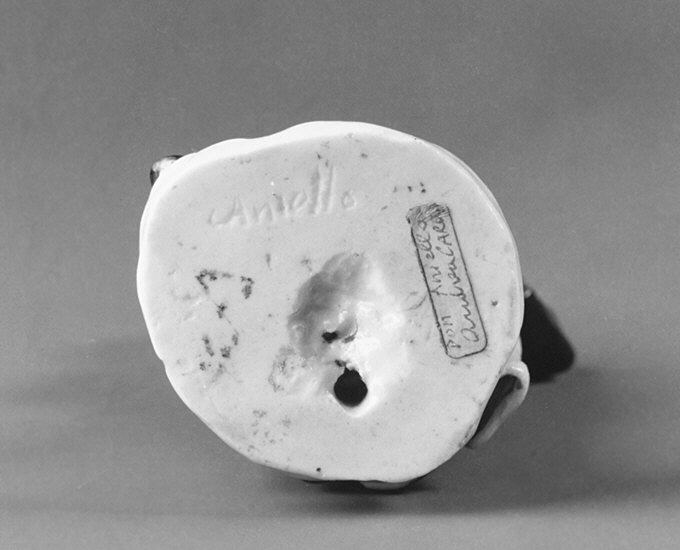Pantalone
Manufactory Royal Porcelain Manufactory, Naples Italian
Modeler Aniello Ingaldo
Not on view
In 1759 the king of Naples succeeded to the Spanish throne as Charles III and, unwilling to abandon his porcelain factory at Capodimonte, literally took it with him: forty-one workers (including Giuseppe Gricci) and several thousand pounds of clay sailed on October 7; the factory buildings and remaining stock were destroyed.
It was not until 1771 that Charles’s son and successor, Ferdinand IV, decided to revive porcelain making in Naples, and he built a new factory near the royal palace. Although Ferdinand’s was an independent enterprise, it retained some links with Capodimonte. The material, a hard-paste porcelain, was developed by one of the Capodimonte kiln workers and, in pieces from the early period, recalls Capodimonte’s glossy white material. Even Capodimonte’s stylistic influence is occasionally evident, as it is in this figure. With his emphatic posture and jutting bearded jaw, this Pantaloon is distinctly reminiscent of a much larger model attributed to Gricci of the same character from the commedia dell’arte.
The figure is one of the few signed pieces by Ingaldo, who was received as a modeler at the Royal Factory in June 1784 and remained there until 1806, when Joseph Bonaparte became king of Naples and the factory was closed. Ingaldo is believed to have continued working as a modeler in porcelain at a small factory set up by a later owner of the defunct Royal Factory; his last known dated work is a figure of 1821. He is also known as a sculptor of prsèpio figures and furnished the popular Neapolitan crèches with figures of the same type and forceful character as appear in his porcelain models.
Due to rights restrictions, this image cannot be enlarged, viewed at full screen, or downloaded.
This artwork is meant to be viewed from right to left. Scroll left to view more.




